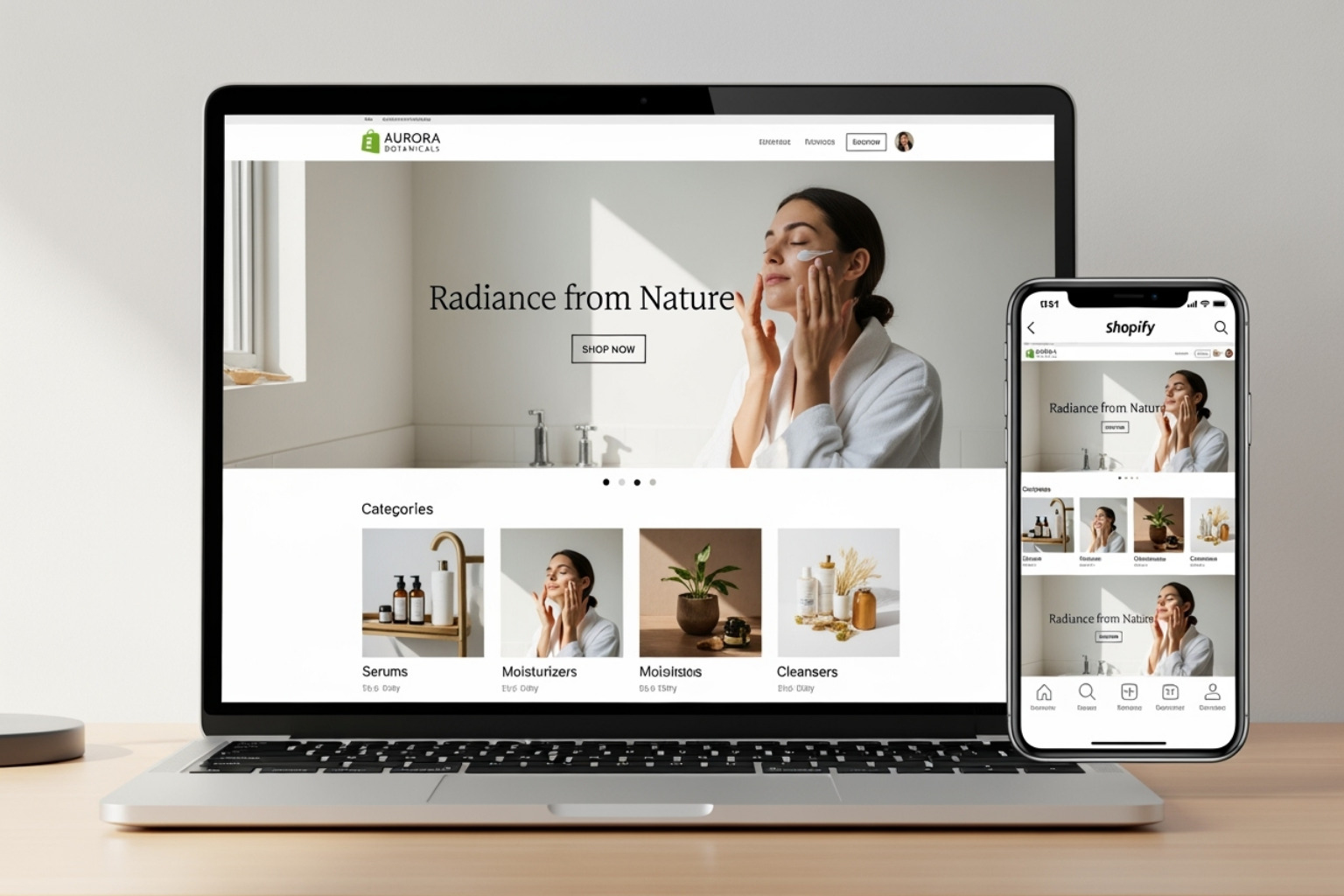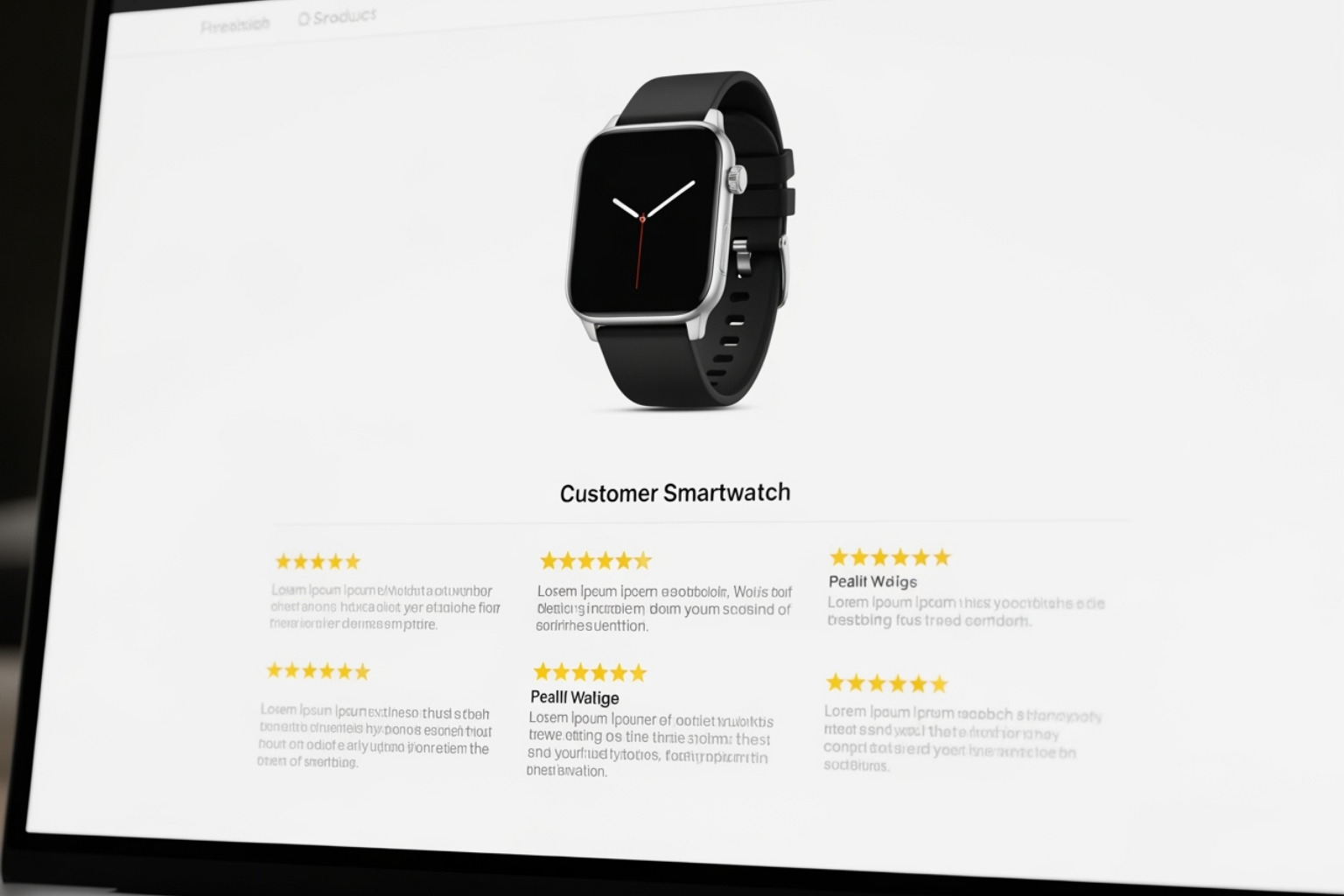Why Shopify Brand Building is More Important Than Ever
Shopify brand building is the process of creating a unique identity and story that connects with customers on an emotional level, going beyond just selling products. It involves defining your mission, creating visual consistency, developing a compelling voice, and building trust at every customer touchpoint. Here are the key components:
- Foundation: Define your target audience, unique value proposition, and brand positioning.
- Visual Identity: Create a memorable name, logo, color palette, and typography.
- Store Design: Choose a Shopify theme and customize pages for brand consistency.
- Marketing: Use SEO, email campaigns, and social proof to build a loyal community.
- Customer Experience: Ensure smooth navigation, fast loading, and excellent support.
The numbers tell a powerful story. Brands with strong emotional connections see a 306% higher customer lifetime value. Meanwhile, 82% of consumers stay loyal to brands that share their values, and 75% of shoppers have left brands that didn't.
Many e-commerce businesses face a saturated dropshipping market. Without a brand, generic products compete on price alone, leading to a race to the bottom with little room for profit. Building a real brand changes this. When customers connect with your story, they stop comparing prices and become loyal supporters who trust you, not just your products.
Brands like Gymshark and True Classic show the power of this approach. Their massive growth wasn't an accident; it was the result of planned brand development. The change from a product focus to a brand focus is essential. Your brand is your defense against competitors and creates lasting value.
I'm Steve Pogson, founder of First Pier. For over two decades, I've helped businesses like Wyman's Blueberries and Hyperlite Mountain Gear build successful Shopify stores. I've seen how effective Shopify brand building turns struggling stores into thriving businesses with loyal customers.

Step 1: Lay the Foundation for Your Brand Strategy
Before picking colors or logos, it's important to know that brand development and branding are different.
Branding is the visual part—your logo and identity that help customers recognize you. Brand development is the deeper, ongoing process of positioning what you sell as more appealing than what competitors offer. You're constantly refining your identity and messaging.
As marketing expert Seth Godin says, "A brand is the set of expectations, memories, stories, and relationships that, taken together, account for a consumer's decision to choose one product or service over another." This applies to your business and your personal brand as a founder.
My goal is to help you create a brand that connects with customers and reflects your values. Shopify brand building starts with a solid foundation: your mission, values, and target audience. This helps build lasting connections and drives loyalty. For a deeper look, check out my insights on Ecommerce Brand Building.
Find Your Target Audience and Niche
If you're trying to sell to everyone, you're selling to no one.
The first step in Shopify brand building is knowing your audience. Who are they? What problems are they trying to solve? Without this, your message won't connect.
I recommend thorough market research. Talk to potential customers, analyze competitors, and watch social media trends. For example, the snack brand Chomps initially targeted CrossFit enthusiasts but found that 70% of its customers were female. This finding changed their whole marketing strategy.
Think about what you offer and why it matters to your audience. This defines your brand identity and shapes your messaging, products, and customer experience. It's about matching your product to customer needs. For more guidance, explore my thoughts on target audience.
Define Your Unique Value and Positioning
Once you know who you're serving, you need to answer: what makes you different?
Your unique value proposition is what makes you stand out. Do you compete on price, quality, or customer service? Or do you solve a unique problem? For example, offering a lightweight, waterproof daypack that folds into a pouch with a lifetime guarantee is a clear difference.
Good brand positioning helps you adapt to market changes. It's about the whole experience, not just the product. Your value proposition should guide your marketing and is why customers choose you over others.
This work is key. It's how you avoid competing only on price and build something customers value. For more on this, see my guide on Branding Strategy for Ecommerce.
Create a Compelling Brand Story and Voice
People don't just buy products; they buy stories.
A good brand story creates an emotional connection. It explains your purpose and gives your business a personality: playful, serious, luxurious, or down-to-earth. This personality defines your brand voice—the tone you use with customers.
Many successful brands share the founder's story. Charlotte Cho of Soko Glam built a personal brand by sharing her skincare experience before launching her products, creating a trustworthy persona. Similarly, EmBeba builds trust by highlighting its values on its brand story page.
Your mission and vision should line up with your values and speak to your audience. Keep your story authentic and clear to create lasting customer connections. For more on developing your brand's voice, explore my thoughts on Digital Branding Strategy.
Step 2: Create Your Visual Brand Identity
With the strategy set, it's time for the visual part of Shopify brand building. This includes your name, logo, colors, and fonts. These elements are crucial, as people form first impressions in just 0.1 seconds.
Consistency in your visuals isn't just for looks; it builds recognition and trust. When customers see your colors or logo, they should instantly know it's you. This helps you stand out and builds loyalty. To see a powerful visual identity in action, look at my case study on Brand Identity for Jewelry Earthly Delights Brand.
Choose a Memorable Name and Domain
Your brand name is often a customer's first impression, so it's a key part of Shopify brand building. Aim for a short name that's easy to say, spell, and remember. If people can't find you, you've lost them.
The name should be unique and available as a .com domain and on social media. You don't want to build a brand and then find the Instagram handle is taken. Avoid hyphens or numbers. For example, the hair removal company Nood used a creative spelling of "nude" that was memorable and available.
A custom domain makes you look professional. If your ideal .com is taken, try alternatives like .co. If you need ideas, a Business Name Generator can help.
Select Your Brand Colors and Fonts
Colors shape how customers see your brand. Consistent colors can increase brand recognition by 80%. Choose a primary color that reflects your brand's personality—bold, calm, or trustworthy. Your color choice sends a message.
Then, add secondary and accent colors. A good guideline is the 60-30-10 rule: 60% main color, 30% secondary, and 10% accent. Keep your color codes (Hex, RGB) for consistency. The beverage brand De Soi is a great example with its consistent, muted palette.
Typography is also important. Stick to two fonts: one for headings, one for body text. Serif fonts can feel traditional, while sans-serif fonts look modern. Use decorative fonts sparingly. Ensure body text is at least 16px for readability. The home brand Floof does this well by pairing a sans-serif for headers with a serif for body text.
Design a Simple and Scalable Logo
Your logo is your brand's visual anchor. It should be memorable but simple enough to work anywhere, from a favicon to a storefront sign. Options include a wordmark (like Glossier), an icon (like Eons' mushroom), or a combination.
My advice: simpler is better. Clean lines work more effectively than complex designs. Your logo should be recognizable at any size and look good in both color and black and white.
If your budget is tight, tools like Canva can help. But if design isn't your strong suit, hiring a professional designer is a good investment. You can find affordable options on gig sites or through Shopify Experts who specialize in logos.
Think about how you'll use your logo. Brands like Lazypants use their icon on clothing and their full wordmark on their website. This flexibility helps strengthen your brand in different places. For more guidance on creating a complete visual system, explore my thoughts on logo systems.
Step 3: A Practical Guide to Shopify Brand Building
With your foundation and visuals ready, it's time to build your Shopify store. Your website is your digital storefront where your Shopify brand building comes to life. Every element, from your theme to your product descriptions, must work together.

Your Shopify store is where customers experience your brand. A well-branded store builds trust. When your homepage looks professional, customers are more likely to stay and buy. For a full list of what to consider, see my Shopify Store Branding Checklist.
Choose and Customize Your Shopify Theme
Your Shopify theme is the backbone of your store. It's not just about looks; it's about function. Does it support your needs, like large images, video content, or advanced filters?
The Shopify Themes Store has free and paid options. Choose a theme that matches your brand's style—whether it's modern and minimal or has a vintage feel.
Customize your theme with your brand's colors and fonts. Don't stick with the defaults. Most importantly, ensure your theme is mobile-responsive. Many people shop on their phones, so a broken mobile site means lost sales. Test on multiple devices before launching.
Design Key Pages for Brand Consistency
Don't forget your other pages. Your About Us page is for telling your story and connecting with customers. Your Contact Us and FAQ pages should be easy to use and answer common questions.
All pages should have a consistent brand feel. Use the same voice, visuals, and messaging. Consistency builds trust and makes your business look professional.
High-quality visuals are a must. 80% of shoppers say photos affect their buying decisions. Invest in good photography. Show products from multiple angles and in use—like clothing on people or furniture in rooms.
Videos can show how a product works or looks in motion. Be sure to compress all images and videos to keep your site fast. 40% of visitors leave a site if it takes more than 3 seconds to load.
Write Product Descriptions with Personality
Product descriptions are a great place to use your brand voice. Don't just list features. Write descriptions that connect with customers and inform them.
Use descriptive language to help customers imagine using your product. For a candle, instead of "lavender scented," try "Breathe in the calming scent of fresh lavender fields." Focus on the benefits and how the product makes the customer feel.
Your descriptions should match your brand voice—playful, luxurious, or something else. Consistency is key. For more tips, see my resources on Content Marketing for Ecommerce.
Ensure a Smooth User Experience
Great branding won't matter if your store is hard to use. A poor user experience loses customers. Make your navigation simple so customers can find what they need in a few clicks.
Site speed is critical. As mentioned, 40% of visitors leave slow-loading sites. Optimize images, pick a fast theme, and limit apps that slow down your store.
Make your checkout process simple. Remove extra steps, offer guest checkout, and show security badges. Be clear about shipping costs and your return policy to avoid last-minute surprises that lose sales.
Add a chat widget for immediate support. Quick answers build trust. Even a simple chatbot can improve the customer experience and reduce abandoned carts.
Step 4: Promote Your Store and Build a Loyal Community
You've built a great Shopify store. Now, it's time to attract customers and keep them coming back. This step is about smart promotion and building a community around your brand.

Shopify brand building is an ongoing process. It's a conversation with your customers. The brands that succeed focus on relationships, not just transactions, as I've seen in my work on Ecommerce Marketing Strategy.
Use SEO to Increase Visibility
SEO helps the right people find your store. When someone searches for your products, you want to appear. Start with the basics: optimize your homepage metadata, title tags, and meta descriptions with keywords. Do the same for your product pages.
SEO is more than keywords. Google values trust and expertise. Following Google's EEAT guidelines means creating helpful content and showing your expertise. Use Google Search Console to monitor your site's performance.
SEO is a long-term investment. It takes time, but ranking well brings a steady stream of organic traffic.
Develop a Pre- and Post-Launch Marketing Plan
Successful launches are planned. Before you go live, create buzz with social media sneak peeks, early access for email subscribers, or a countdown campaign.
After launch, email marketing is key. Send personal, valuable emails like welcome messages, product recommendations, exclusive offers, and abandoned cart reminders. This shows you're paying attention.
On social media, let your brand's personality shine. Interact with your audience, share customer photos, and respond to comments. User-generated content is powerful because it's real. For more on this, see my guide to Shopify Marketing Strategy.
Use discount codes for first-time buyers or special events, but don't overdo it. You want to build a brand, not a discount store.
Build Trust with Social Proof and Great Support
People can be wary of new online stores. Social proof helps. When potential customers see that others have had a good experience, they're more likely to buy. Show customer reviews and star ratings clearly on your product pages.
Go beyond star ratings. Use testimonials with names and photos. Create a reviews page. Encourage customers to share photos and videos of your products. This real content can inspire more sales.
Here are some powerful ways to show social proof: customer testimonials, visible star ratings, user-generated content, influencer endorsements, media mentions, "bestseller" labels, real-time viewing indicators, and social media metrics showing an active community.
Great customer support is also crucial. Connected customers have a 306% higher lifetime value. A chat widget and quick email responses show you care. Handling issues well can turn a problem into a chance to build loyalty.
Every interaction is a chance to strengthen your brand. Answer questions quickly and treat every customer well. This is how you turn one-time buyers into lifelong supporters.
Frequently Asked Questions about Shopify Brand Building
I've worked with hundreds of e-commerce business owners, and certain questions come up again and again. Let me address the most common ones I hear about Shopify brand building.
What are the first steps for successful Shopify brand building?
The first steps are defining your target audience, establishing a unique value proposition, and creating a compelling brand story. This foundation guides all other decisions, from your store's name to your marketing messages.
Think of it like building a house: you need a foundation before you can paint the walls. When you're clear on your mission, audience, and what makes you different, all your other branding decisions will fall into place.
How does brand consistency affect my Shopify store's revenue?
Strong brand consistency can really boost your business. Studies show revenue can jump by an average of 33% with consistent branding. It builds recognition and trust, which encourages customer loyalty and repeat purchases.
When customers see consistent colors, fonts, and messaging everywhere, they start to recognize and trust you. Trust turns visitors into repeat customers. Consistent brand colors alone can increase recognition by 80%. When customers trust your brand, they stop comparing prices and buy from you because they believe in what you offer.
Can I build a personal brand alongside my Shopify store?
Yes, and it can be very effective. Many founders build a personal brand first to establish expertise and trust, creating a built-in audience for their store. The key is to make sure your personal brand's values line up with your store's brand.
For example, Charlotte Cho of Soko Glam built a personal brand by sharing her skincare knowledge before launching her store. This gave her a built-in audience that already trusted her.
The real question is how public you want to be. Some founders are the face of their business, while others prefer to let the products speak for themselves. Both ways can work, but authenticity is key. Your personal brand must be genuine and line up with your business values. Customers can spot a fake, which quickly damages trust.
To Sum Up: The Lasting Power of a Strong Brand
Building a brand on Shopify is a marathon, not a sprint. It's an ongoing commitment. E-commerce is always changing, and your store must adapt. Merchants who stay current with trends and keep learning see better long-term results.
Shopify brand building is more than a pretty storefront. It creates sustainable growth, builds customer loyalty, and increases customer lifetime value. People come back because they trust your brand, not just your products.
A strong brand helps you stand out without competing on price. You can charge more because customers see the value in your story and the experience you offer. Every detail, from your design to your customer support, matters. Consistency across all these elements strengthens your brand and builds trust.
The businesses I've seen succeed long-term understand this. They know brand building takes work and a real understanding of their audience. The rewards—higher lifetime value, strong customer relationships, and a resilient business—are worth it.
If you're ready to create a brand that truly connects and builds those lasting customer relationships, my team at First Pier is here to help. We've spent years perfecting the art and science of Shopify brand building, and we'd love to put that expertise to work for your business.
Start building or refining your brand with us. Hit the 'Subscribe' button below; it's a two-second affair, but the bounty of e-commerce wisdom we share is endless. You'd be silly not to!








